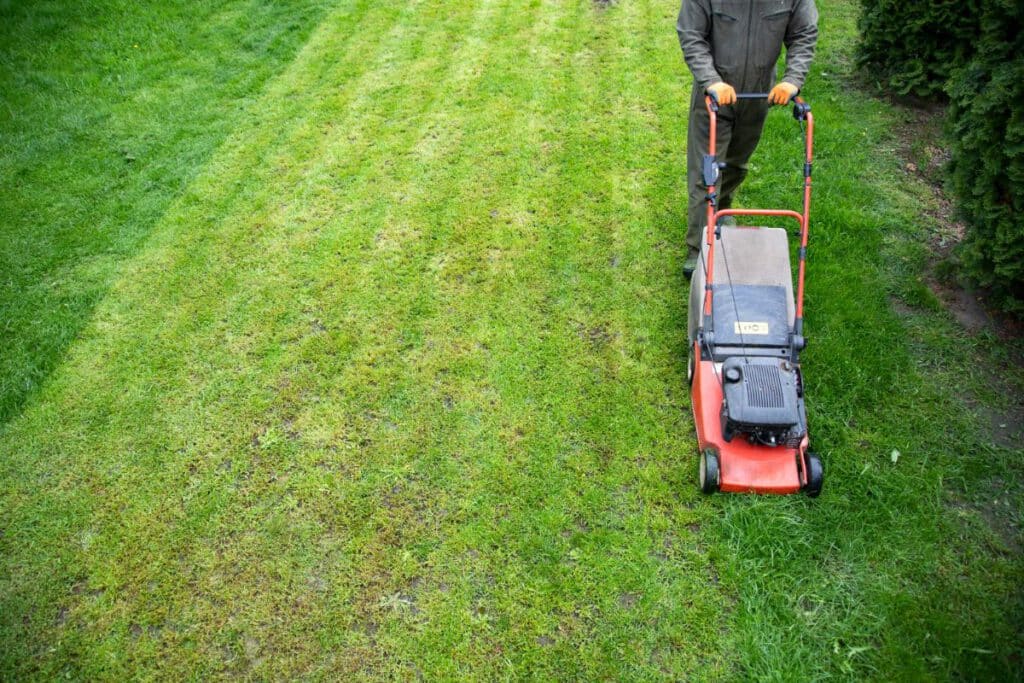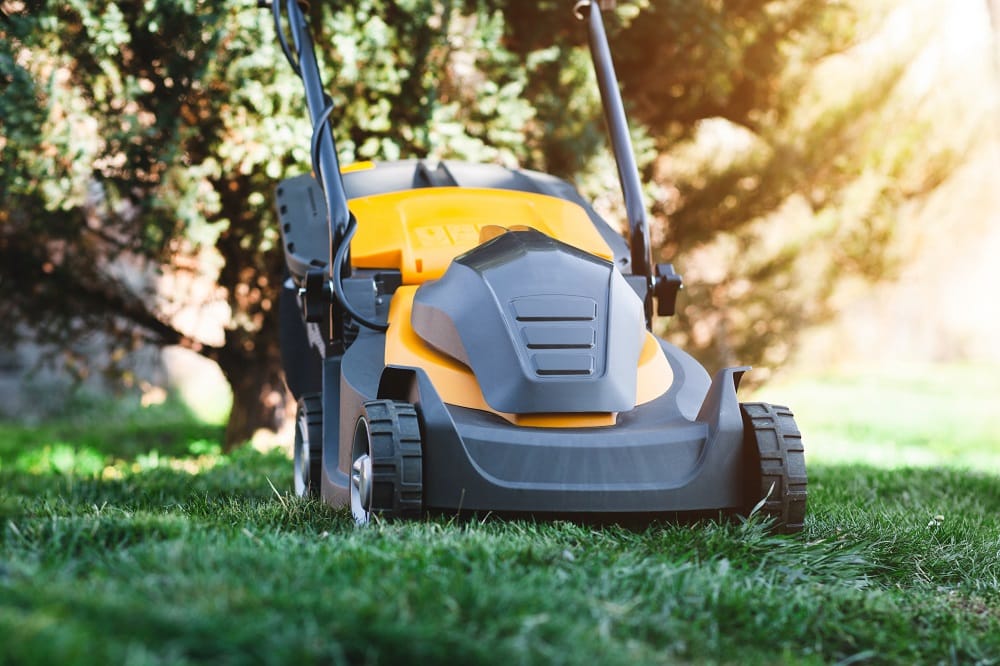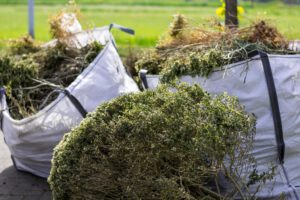Many people want a lush, green lawn that stands out. However, achieving and maintaining such a lawn takes knowledge and a solid plan. Taking care of grass involves more than just occasional watering and mowing. It’s important to know what your grass needs in each season to keep it looking great all year. In this guide, we’ll show you how to create a grass care schedule that meets your lawn’s specific needs in spring, summer, fall, and winter.
This guide is for anyone interested in gardening, whether you’re experienced or just starting out. With the right information and tools, you can turn your lawn into a beautiful space you’ll enjoy every day and season. Let’s get started on what makes for great grass care.
Benefits of Year-Round Grass Care
Taking care of your grass throughout the year isn’t just about keeping up with the neighbors; it can genuinely transform your outdoor space and bring a host of benefits. Implementing a grass care schedule is crucial to achieving these perks. Let’s explore some of these benefits.
Enhanced Appearance
Year-round grass care ensures your lawn maintains its lush green appearance throughout the seasons, boosting your property’s curb appeal and leaving a lasting impression on visitors.
Weed and Pest Control
Consistent care helps prevent weed infestations and minimizes the presence of pests that can damage your grass and plants. Regular maintenance, including mowing, fertilizing, and aerating, creates a strong domain that naturally resists weed growth and pest infestation.
Improved Soil Health
Year-round grass care practices such as mulching, proper watering, and soil aeration promote healthy soil structure and microbial activity. Healthy soil provides essential nutrients to the grassroots, encouraging dynamic growth and resilience against diseases and environmental stressors.
Environmental Sustainability
Adopting year-round grass care practices contributes to environmental sustainability by reducing water consumption, minimizing chemical usage, and promoting biodiversity. Eco-friendly lawn care techniques, such as using organic fertilizers and native plant species, support local ecosystems and wildlife habitats.
Long-Term Cost Savings
Investing in year-round grass care may initially require some effort and expense, but it pays off in the long run. Regular maintenance helps prevent costly lawn repairs and replacements by addressing issues early and maintaining your lawn’s overall health and vitality, saving you time and money in the future.
Creating a Seasonal Grass Care Schedule
A grass care schedule is not one-size-fits-all; it should adjust as the seasons change. To make sure that your lawn stays healthy throughout the year, let’s discuss its maintenance requirements for each season.
Spring grass care tasks
Spring is all about preparation and setting the stage for a lush, vibrant lawn. Key tasks include:
Aeration
This process relieves soil compaction, allowing better access to air, water, and nutrients for the roots.
Fertilization
Use a slow-release nitrogen fertilizer to promote healthy growth.
Overseeding
Fill in any bare spots to prevent weeds from taking over.
Mowing
Begin regular mowing, but ensure not to cut the grass too short to avoid stressing it.
Summer grass care tasks
Summer requires a focus on maintenance and protection. Here’s what you should concentrate on:
Watering
Aim for early mornings to minimize evaporation; your lawn needs about 1 inch of water per week.
Pest and weed control
Watch out for signs of pests and apply treatments as needed. Use pre-emergent weed killers to keep weeds at bay.
Mowing
Continue to mow regularly while adjusting the height of your mower to cut grass a little higher, which helps shade the soil and retain moisture.
Fall grass care tasks
Fall is the perfect time to start preparing your lawn for the upcoming colder months:
Aeration and overseeding
These tasks are critical in the fall to repair any summer damage.
Fertilization
Apply a phosphorus-rich fertilizer to encourage root growth and prepare the lawn for winter.
Leaf removal
Regularly removing fallen leaves helps prevent them from suffocating the grass, enhancing lawn health and appearance.
Winter grass care tasks
While grass care slows down in winter, there are still tasks to ensure your lawn emerges healthy in the spring:
Avoid heavy traffic
Keep off the lawn as much as possible, as the frozen grass is more susceptible to damage.
Monitoring
Keep an eye on the lawn for signs of snow mold or rodent damage.
Planning
Winter is the perfect time to plan for any major landscaping changes or additions for the upcoming seasons.
Specialized Grass Care Treatments
Creating a lush, vibrant lawn requires more than just regular watering and mowing. Implementing a specific grass care schedule that includes certain specialized treatments is essential to achieve a healthy lawn year-round. These treatments help to improve soil health, promote grass growth, and prevent annoying weeds.
Soil Testing
Regularly perform soil tests to evaluate nutrient levels, pH balance, and soil composition for optimal soil health and plant growth. Based on the results, you can adjust fertilization and soil amendment practices to optimize nutrient availability and soil health.
Core Aeration
Core aeration involves removing plugs of soil from the lawn to alleviate soil compaction, improve air circulation, and enhance water absorption. This process promotes deeper root growth and overall domain health.
Topdressing
When applying topdressing, a thin layer of organic material, such as compost or topsoil, is spread over the lawn surface. It helps improve soil structure, increase microbial activity, and enhance nutrient retention, leading to healthier grass growth and improved territory quality.
Dethatching
Thatch is a layer of dead grass and organic debris that accumulates between the grass blades and the soil surface. Excessive thatch can impede water and nutrient penetration, leading to shallow root development and increased susceptibility to disease. Dethatching involves removing excess thatch to promote a healthier lawn.
Overseeding
Overseeding is the process of spreading grass seed over existing turf to fill in bare patches, improve turf density, and introduce newer grass varieties. Overseeding helps rejuvenate an aging lawn, enhance its resilience against pests and diseases, and promote a thicker, lusher territory.
Weed Control
Implement targeted weed control measures to manage broadleaf, grassy, and invasive plants effectively. Options include pre-emergent and post-emergent herbicides, manual removal, and cultural practices such as proper mowing height and overseeding.
Disease Management
Monitor your lawn for signs of fungal diseases, such as brown patches, dollar spots, and rust. Implement preventive measures such as proper watering, adequate air circulation, and regular lawn maintenance to minimize disease incidence. In cases of severe disease outbreaks, consult with a lawn care professional for appropriate treatment options.
Insect Control
Identify and address insect infestations promptly to prevent damage to your lawn. Typical lawn pests encompass grubs, chinch bugs, sod webworms, and armyworms, which may disrupt lawn vitality and appearance. Treatments may include insecticidal sprays, biological controls, and cultural practices to reduce pest populations and minimize damage.
Tools and Equipment for Effective Grass Care

Alongside specialized treatments, having the right tools and equipment is vital for effective grass care. Incorporating a grass care schedule into your routine ensures your gear is in top condition, making lawn maintenance easier and more efficient.
Lawn Mower
Choose a mower appropriate for the size and terrain of your lawn. Options for mowers include push, self-propelled, and riding mowers, catering to various lawn sizes and user preferences. Consider features like cutting width, adjustable cutting height, and mulching capabilities.
String Trimmer (Weed Eater)
A string trimmer helps trim grass along edges, fences, and obstacles that a lawn mower cannot reach. Look for a trimmer with adjustable shaft length, ergonomic design, and easy-to-replace trimmer line.
Leaf Rake
Use a leaf rake to remove leaves, debris, and thatch from the lawn surface. Opt for a sturdy rake with flexible tines and a comfortable handle grip.
Lawn Edger
A lawn edger creates clean, crisp edges along sidewalks, driveways, and flower beds, enhancing the overall appearance of your lawn. Choose between manual and powered edgers depending on your preferences and lawn size.
Sprinkler System or Hose with Nozzle
Ensure proper watering by using a sprinkler system or hose with an adjustable nozzle. Water deeply and infrequently to promote healthy root growth and avoid overwatering.
Soil Aerator
A soil aerator helps alleviate soil compaction and improve air and water penetration into the root zone. Consider using a manual or powered aerator, depending on your lawn size and budget.
Spreader
Use a spreader to apply fertilizers, grass seed, and other lawn care products evenly across the lawn surface. Choose between broadcast spreaders and drop spreaders based on your specific needs and preferences.
Garden Trowel and Hand Pruners
These tools are handy for planting, transplanting, and pruning small plants and flowers in your lawn and garden beds.
Lawn Roller
A lawn roller helps smooth uneven ground, compact loose soil, and improve seed-to-soil contact when overseeding or installing sod.
Garden Gloves and Knee Pads
Protect your hands and knees while working in the garden and lawn by using sturdy garden gloves and comfortable knee pads.
Safety Gear
Always wear appropriate safety gear, including eye protection, hearing protection, and sturdy footwear when using powered equipment such as mowers and trimmers.
Conclusion
In conclusion, mastering a year-round grass care schedule is crucial for achieving a lush, vibrant lawn that enhances your property’s curb appeal and environmental sustainability. By understanding the specific needs of your grass throughout the seasons and implementing specialized treatments like aeration, overseeding, and targeted pest control, you can ensure optimal soil health and grass growth. Investing in the right tools and equipment and troubleshooting common grass issues such as brown patches and thinning grass will help you maintain a beautiful lawn year-round while saving time and money in the long run. With the right knowledge and commitment to consistent care, your dream lawn can become a reality, leaving a lasting impression on visitors and contributing to a greener, healthier environment.
Contact All Seasons Landcare to Level up your Lawn
Are you feeling a bit overwhelmed with all the details of creating the perfect grass care schedule? Maybe you’re not exactly sure when to start aerating or which fertilizer is the best choice for your lawn type. No worries at all! That’s exactly where All Seasons Landcare comes in. With years of experience under our belts and a lineup of passionate lawn care experts services in Arlington TX, we’re here to help you every step of the way. We create a personalized lawn care plan for your specific needs, ensuring your grass remains vibrant and healthy throughout the year. Contact All Seasons Landcare today, and let’s work together to create a personalized lawn care plan that meets your unique needs. Our team focuses on understanding your concerns and offering the best solutions for you and your lawn.
Frequently Asked Questions
What is the recommended frequency for lawn mowing?
The frequency of mowing depends on factors such as grass type, weather conditions, and growth rate. Generally, aim to mow no more than one-third of the grass blade at a time and adjust your mowing schedule accordingly.
Do I need to fertilize my lawn every season?
While fertilizing in every season isn’t necessary, providing nutrients to your lawn is essential, especially in spring and fall. Consider a balanced fertilizer application in spring to kickstart growth and a winterizing fertilizer in fall to prepare for dormancy.
How can I prevent weeds without harming my grass?
Maintaining a healthy, thick lawn is the best defense against weeds. Regular mowing, proper watering, and fertilization can help promote vigorous grass growth, choking out weeds. Additionally, spot-treat weeds with herbicides or manually remove them as soon as they appear.
Elevate your lawn care game! Our ultimate guide helps you create a year-round grass care schedule for a lush, healthy yard.








